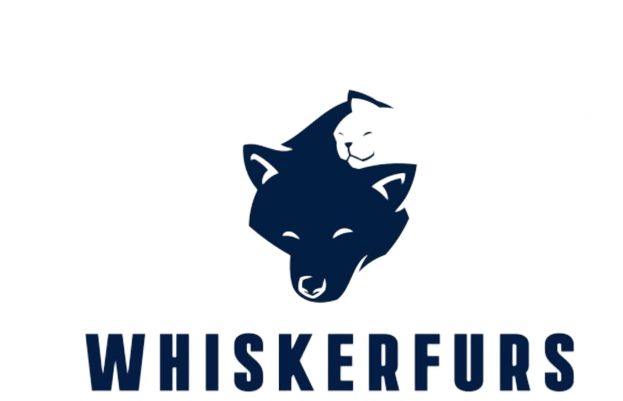In the late 1900s, a new breed of dog emerged: Goldendoodles, a non-shedding dog.
This was because humans have always been curious and daring enough to produce new breeds that are suitable for some roles and have certain characteristics missing in existing breeds.
One of the unique characteristics needed at that time was a non-shedding dog breed.
This was mostly as a result of allergies.
This quest led to the development of a breed that does not shed and is also playful, intelligent, friendly, hypoallergenic, and suitable as a family pet.
Goldendoodle, a new breed, was formed.
The Goldendoodle Breed:
The first Goldendoodle originated in the United States as a cross between a golden retriever and a poodle (standard poodle).
This new breed had the desirable friendly, loyal, playful, and intelligent attributes of a golden retriever and the non-shedding coat of a standard poodle.
They were excellent at learning commands and obedient.
These attributes quickly made a new family favorite pet, especially for individuals with allergies.
Physical characteristics of a Goldendoodle:

Goldendoodle has varying sizes depending on the parent poodle used while crossing with a golden retriever.
Poodles have three different sizes and weights, which are
- Standard Poodle: Standard poodle + Golden retriever usually weighs 50-90 pounds with a height of 22-24 inches
- Medium Poodle: Medium poodle + Golden retriever usually weighs 40-60 pounds with a height of 18-22 inches
- Miniature Poodle: Miniature poodle + Golden retriever usually weighs 25-50 pounds with a height of 14-18 inches
- Toy Poodle: Toy poodle + Golden retriever usually weighs 10-25 pounds with a height of 10-14 inches
Coat of Goldendoodles:
Goldendoodles have different coat patterns similar to the individual parent breed.
Their different coats affect their grooming behavior and needs and they are;
- Straight: close resemblance to a golden retriever
- Wavy: Combination of both parent breeds (golden retriever and poodle)
- Curly: close resemblance to poodles
What are the colors of Goldendoodles?
Just like the height and size, Goldendoodles also have different colors.
Their varying size, height, and colors make them the most unique dog breeds.
Their varying colors are due to the dominant and recessive genes of the parent breeds in the individual.
The different colors of the individual breeds that form a goldendoodle are
- Golden Retriever: Golden, light, and dark gold and cream colors
- Poodle: Red, blue, silver, white, grey, Cafe-au-Lait and apricot.
The different colors of both the golden retriever and poodle produce a Goldendoodle with
- Solid colors: Golden, black and white
- Parti colors: White and patches of others
- Phantom colors: More of a dark color
- Ticked colors: scattered flecks of colors.
Can a Goldendoodle Shed:
Yes, a goldendoodle can shed, especially for individuals who inherit more of the golden retriever breed.
They are also likely to shed during spring or fall.
However, those that inherit more of a poodle’s traits can also shed less when compared to those with more traits of a golden retriever
In general, they shed less compared to other breeds of dogs.
Types of Goldendoodle Generations:
There are different types of goldendoodles due to the percentage of the DNA of the golden retriever and poodle.
The different types have varying sizes, weights, colors, and heights based on the influence of the individual DNA of the mixed breeds.
Here are the types of goldendoodles that are a reflection of the dominant breed.
- F1 (First Generation): 50% golden retriever, 50% poodle
- F1B (First Generation Backcross): 25% golden retriever, 75% poodle
- F2 (Second Generation): 50% F1 golden retriever, 50% f1 golden retriever
- F2B (Second Generation Backcross): 37.5% golden retriever, 62.5% poodle
- F3 (Third Generation): 50% F2 goldendoodle, 50% F2 goldendoodle
The DNA of a Goldendoodle:
The deoxyribonucleic acid of a Goldendoodle is a combination of both the golden retriever and the poodle breed of the individual.
This determines their height, coat, size, color, eyes, ears, etc.
If the DNA has more chromosomes from the golden retriever, the individual goldendoodle, will have more features of a golden retriever, and vice versa.
The F1 and F2 generations have more golden retriever traits than other generations that are more poodles.
What Generation of a Goldendoodle is Best:
Goldendoodles were developed to meet the demand for a dog breed that does not shed and is hypoallergenic.
Because of this, the best generations of a goldendoodle are F1B and F2B.
However, other considerations such as level of activity, intelligence, size, low maintenance, and health might influence choice.
- Health considerations: F1 and F2B
- Intelligence and trainability: F1 and F2B
- Low maintenance: F1B and F3
What is it like to have a Goldendoodle:

Goldendoodle breeds, unlike other breeds, are low-shedding, which is the perfect breed for those with allergies.
Like other breeds of dogs, they are loyal companions, affectionate, loving, intelligent and trainable, energetic, playful, and fun-loving.
They require a high level of energy, especially for F1 generations.
In the words of Goldendoodle owners, they are the best therapy dogs you can ever wish for, their joy and energy are unmatched, leaving you with the best dog friend ever.

